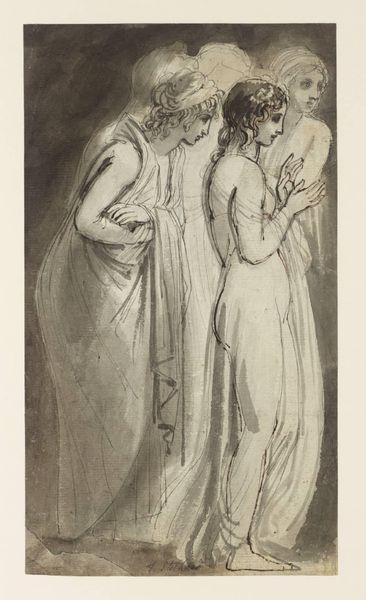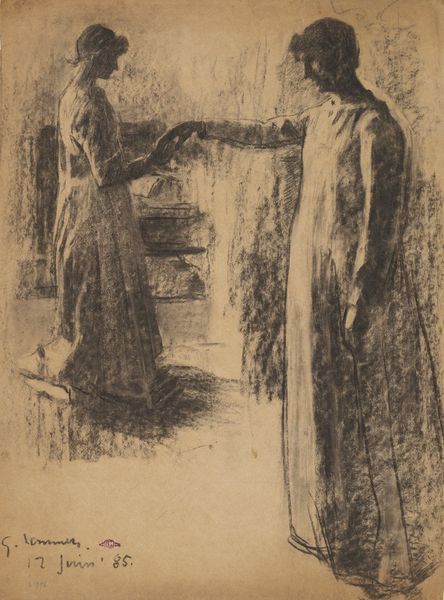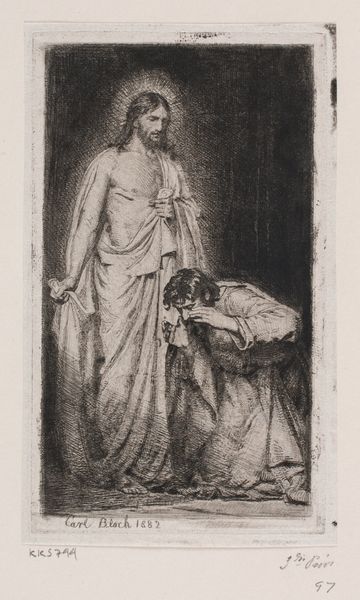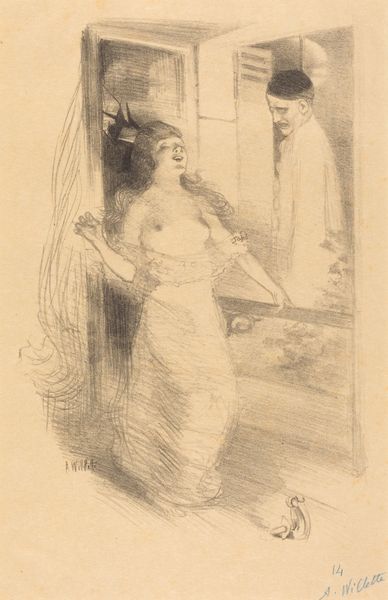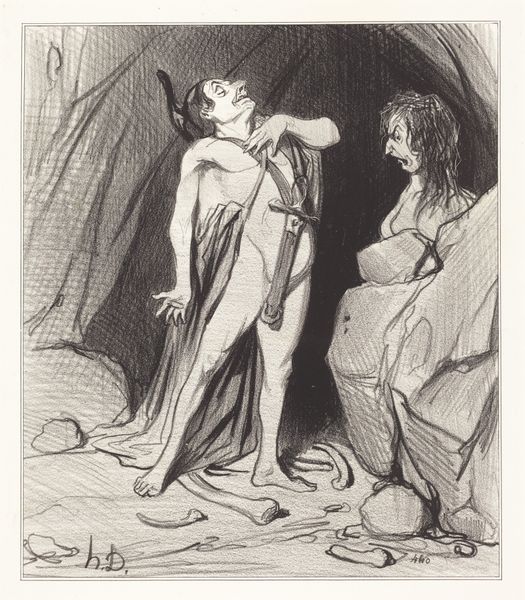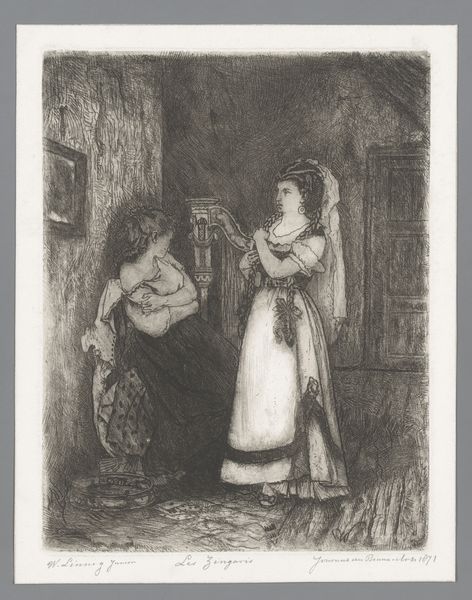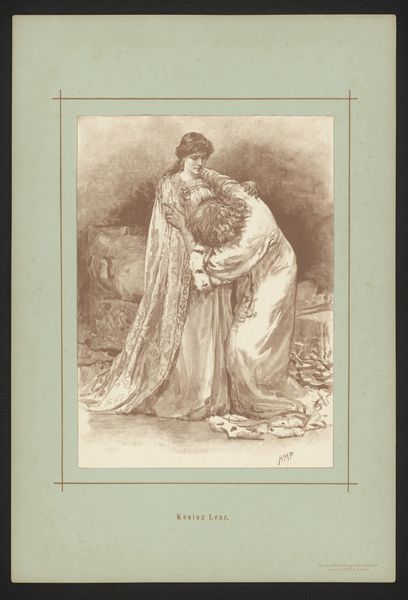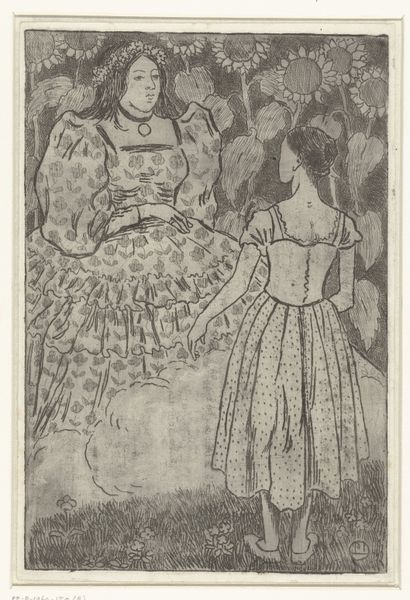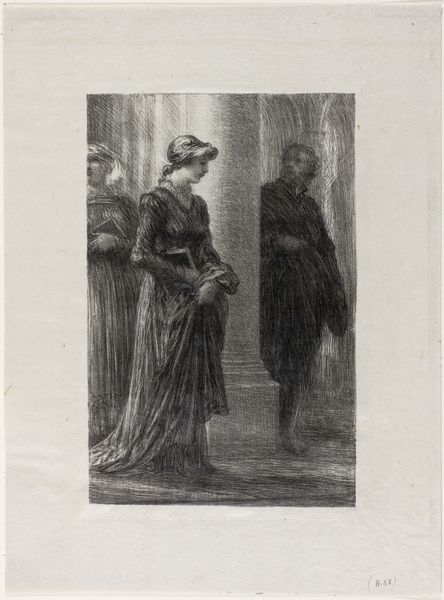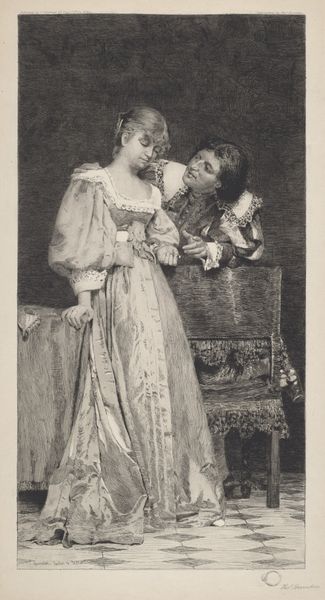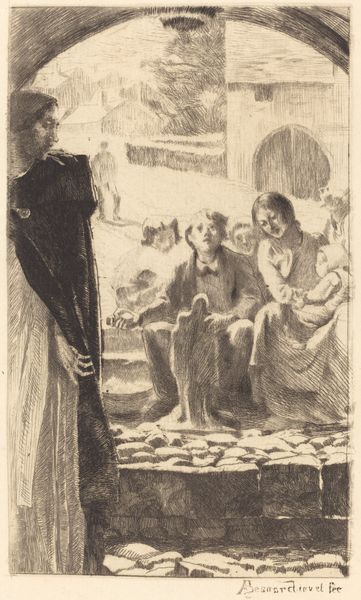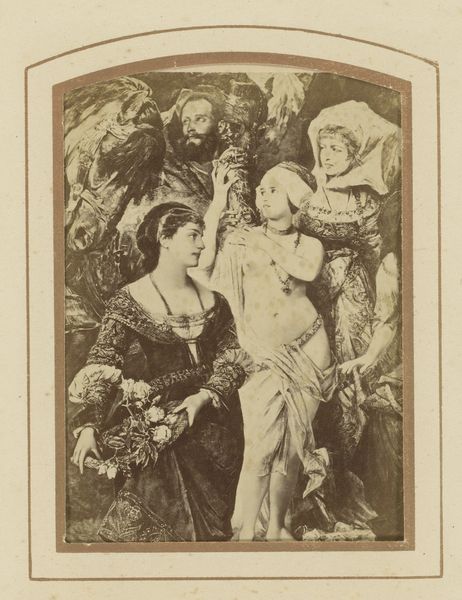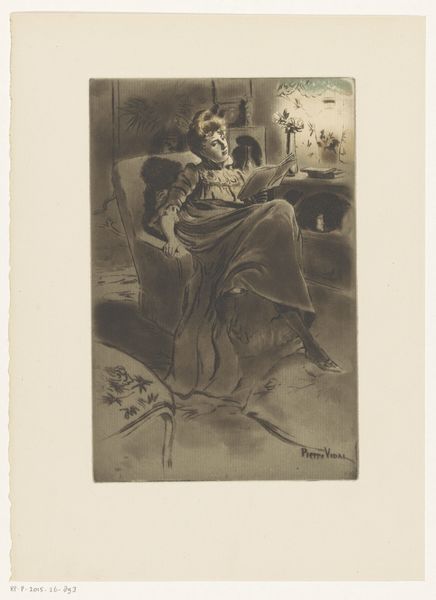
Dimensions: 274 mm (width) x 336 mm (height) (bladmaal)
Curator: Let’s turn our attention to this sketch by Oluf Hartmann, entitled *Man and Woman, Motif from Nordic Antiquity,* created sometime between 1879 and 1910. What are your initial thoughts? Editor: I’m struck by the artist's use of line – such fine, delicate strokes to create a palpable sense of texture and shadow. It imbues the figures with an almost melancholic quality. Curator: Precisely. It's crucial to remember the context. The late 19th century saw a surge of interest in national romanticism and Old Norse sagas. This drawing can be understood as part of that broader effort to reclaim and reimagine national identity through artistic representations of the past. Editor: I can see how Hartmann plays with light to create a symbolic divide. The man stands in a darker space while the woman occupies a brighter, more decorated one with intricate Nordic motifs. Are these contrasts intentional? Curator: Absolutely. The composition echoes societal divisions along gendered lines, which, I argue, serves to underscore the limitations imposed on women. Note their clasped hands: it’s a binding agreement, maybe of subjugation rather than unification. The somber expressions speak to a forced pact between man and woman rather than love or mutual agreement. Editor: From a structural perspective, the positioning is masterful. The eye is drawn from the darkness on the left, across the man, toward the central clasp of hands, then it lands on the ornamented carving. These carefully placed visual elements establish relationships among the foreground figures and the cultural world behind them. Curator: Yes, and in light of this, how do we grapple with Hartmann's construction of masculinity? He's dressed in Roman garb, not exactly Old Norse. Is this to portray this "Nordic antiquity" within a tradition of imperialist legacy and power? Or what of those figures lurking in the shadows to the left? What about their narrative? Editor: These characters serve to emphasize the composition. The figures act as framing devices to push the primary figures to the fore, as the hatching in the sketch gives them greater weight. It serves the linear design. Curator: But by looking at it only in formal terms, we miss opportunities for exploring themes such as gender inequality or the socio-historical construction of national identity, something of importance today! Editor: While it's tempting to apply our contemporary lens, I think it vital that we remain engaged in decoding Hartmann’s own choices in representing his world using form, shape, line, and contrast to create a cohesive whole. I, personally, see this composition as a testament to skillful arrangement. Curator: Still, the drawing opens doors to question long-held narratives that were, and continue to be, mobilized by oppressive social structures.
Comments
No comments
Be the first to comment and join the conversation on the ultimate creative platform.
